It looks as if this starling has enjoyed a snow cone.
A Gray Squirrel pretending to be bark.
The Blue Jay knows that in cold weather, it’s important to be fluffy.
A Red-winged Blackbird tries to hide from winter.

It looks as if this starling has enjoyed a snow cone.

A Gray Squirrel pretending to be bark.

The Blue Jay knows that in cold weather, it’s important to be fluffy.

A Red-winged Blackbird tries to hide from winter.

I watched Cedar Waxwings build a nest one perfect June day in North Dakota. How many waxwings does it take to make a museum?

What happens after you hug a tree.

I’ve decided to organize my closet. That’s a task best done in a crocswise fashion.

How a junco might look with a bad case of dandruff.

My wife’s birthday is just around the bend. This might make a nice birthday pheasant for her.

The rooster pheasant was behaving hawkwardly.

Some Red-bellied Woodpeckers take their red bellies everywhere. Others, not so much.

Someone’s traveling cat finds warmth by sitting on the flat rock in my heated birdbath. The camera-shy feline does so only does so in the dark.

A Eurasian Tree Sparrow is not one to have cold feet.

Are you kidding me? Is that more snow coming down?

A White-crowned Sparrow wearing a bike helmet.

Every circus needs an acrobat. I’m glad the local circus has a Black-capped Chickadee.

This White-tailed Deer has donned its winter coat. The coat has no zippers or buttons.
Naturally
My morning started out with a shower. I hoped to clear the cobwebs from my mind. The invigorating stream of water hadn't been hitting me for long before I noticed I wasn't alone in the shower. What does a spider think when it finds a man in its shower? I can only know what I think and did. I said, "Good morning, spider, I hope you'll have a pleasant day."
A friend sent me an email saying, "To hear a duck quacking is a most fortunate omen, indicating the coming of prosperity." I enjoy hearing from pals, but this forward was much more appreciated than the tired political ones and gave me high hopes for everyone's economy.
Once my morning ablutions had been completed, I went for a walk. During these times and all others, I find comfort in birds. Some snowy days, they all become snowbirds. A blue jay flew into the feeder, selected a peanut in the shell and flew to a tree. It flew back to the feeder with the peanut still in its bill. It dropped the goober onto the feeder and took another peanut more to its liking. I don't think I've ever had a bird return food before. I suppose the best-if-used-by date of the peanut had expired. A house finch makes a wonderful neighbor. It beautifies the neighborhood, sings songs I enjoy hearing and borrows no tools. I spotted a brown creeper, white-winged crossbill and Eurasian collared-dove.
Nature gives me bearings and values. Birds brighten my days. A new birdie's headlights illuminated a recent morning. It was a stranger to my yard. The chestnut-capped and white-cheeked visitor was slightly smaller than a house sparrow. A Eurasian tree sparrow was hanging around with a gang of house sparrows in my yard. They are related species. The bird was a lovely surprise. I’d not seen one in my county before. In Eurasia, this species is widespread and abundant. I saw them when I've worked there and I've seen some in this country. There is a small population in the United States derived from a shipment of songbirds (bullfinches, chaffinches, greenfinches, linnets and Eurasian tree sparrows) brought from Germany and released in St. Louis in April 1870. Introducing the songbirds was meant to enhance the native avifauna and provide familiar bird species for newly settled European immigrants. The Eurasian tree sparrow population took hold and the birds are now found in parts of Missouri, Illinois and southeastern Iowa, but are fairly local. The tougher house sparrow, more aggressive and adaptable, may keep them out of areas. This tree sparrow isn't a bird of cities, preferring farms, lightly wooded residential areas and other more natural places than the house sparrow that is at home with pavement and concrete. The welcome visitor found sustenance in the seeds from my feeders. I was as happy as a lark to see that sparrow.
Q&A
"Why do cardinals arrive so early and stay so late at my bird feeders?" Because that's when the seed prices are lowest. Those redbirds never miss taking advantage of a sale. The male is a dandy. His red plumage is bright and distinct in daylight and attracts attention (both wanted and unwanted). His bright color diminishes in dim light. That makes male cardinals as inconspicuous as their mates at twilight and less easily seen by predators like cats. And avian predators like Cooper’s hawks are inactive at dawn and dusk. Cardinals often live year-round near bird feeders. They have a short commute. They can stay later because their flight home is a brief one. Cardinals feed at dawn and dusk because they have less competition at feeders in low light. That means they don't have to wait behind birds who have clipped a ton of coupons.
"What is a jack snipe?" The jack snipe is a small wading bird native to parts of Europe, Asia and Africa. It's the world’s smallest snipe. A brown marsh bird with a long bill. This country has its relative, the Wilson's snipe. I've heard a pectoral sandpiper called a jack snipe. When called that, it doesn't come any closer. Have you been one of the lucky ones who went on a snipe hunt as a youngster? If so, I hope you're not still holding that bag you're supposed to stuff with the snipe you'd catch. I further hope they didn't drench you in snipe spit, which is purported to be a never-fail snipe lure.
Thanks for stopping by
"Black are my steps on silver sod; Thick blows my frosty breath abroad; And tree and house, and hill and lake, Are frosted like a wedding cake." — Robert Louis Stevenson
"You can't always get what you want. But if you try sometimes, you just might find you get what you need." — The Rolling Stones
Do good.
©Al Batt 2021

Eurasian Tree Sparrow photo by Al Batt

Eurasian Tree Sparrow photo by Al Batt

A wintering White-throated Sparrow.

Ma

Pa

A Dark-eyed Junco is a snowbird. Old Man Winter has given it a lot of responsibility, but this one came through with 6 inches of the white stuff in the recent storm.

A friend brought up the interesting colors on the south end of a northbound White-breasted Nuthatch. True that.

If Jim Rockford were still around, I’d have him put a tail on this House Sparrow.

A starling using a shepherd’s hook as a bald eagle uses a bow perch.

A bald eagle on a bow perch.

A Pileated Woodpecker. How do you pronounce that? It's wu̇d-pe-kər.

A horse built by a committee.

Orchard Oriole dreaming on such a winter’s day.

A black-winged redbird, the Scarlet Tanager.
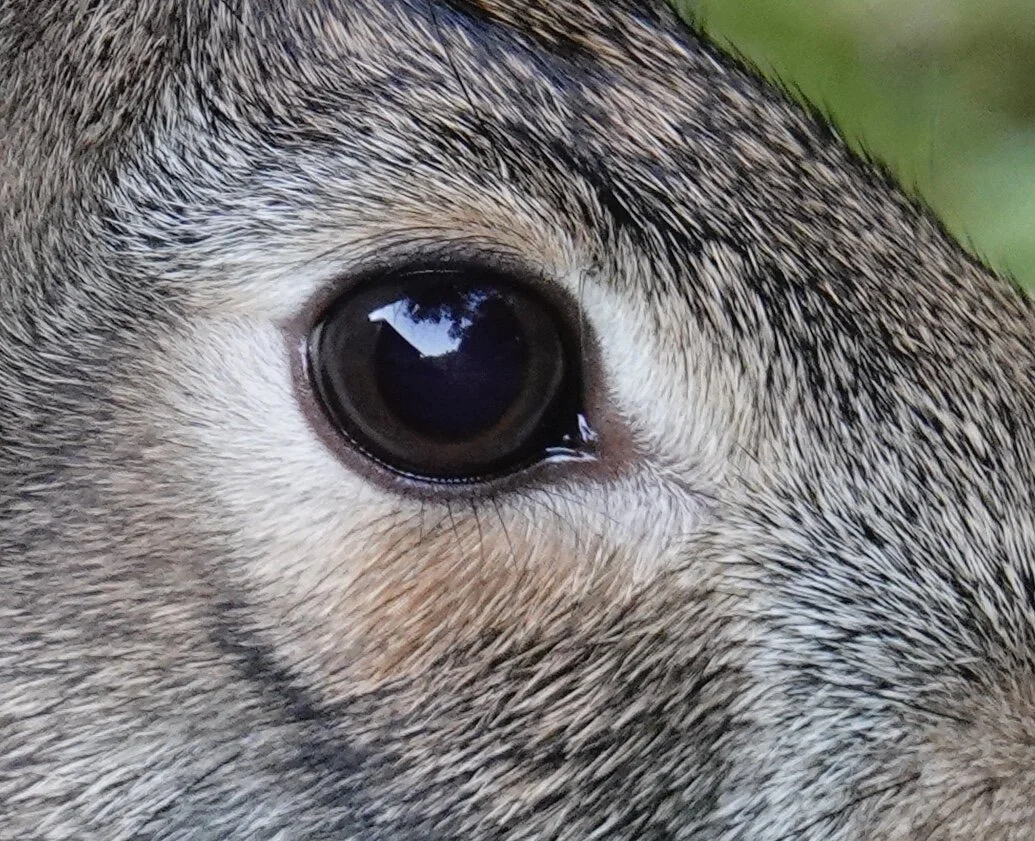
David Hopperfield.
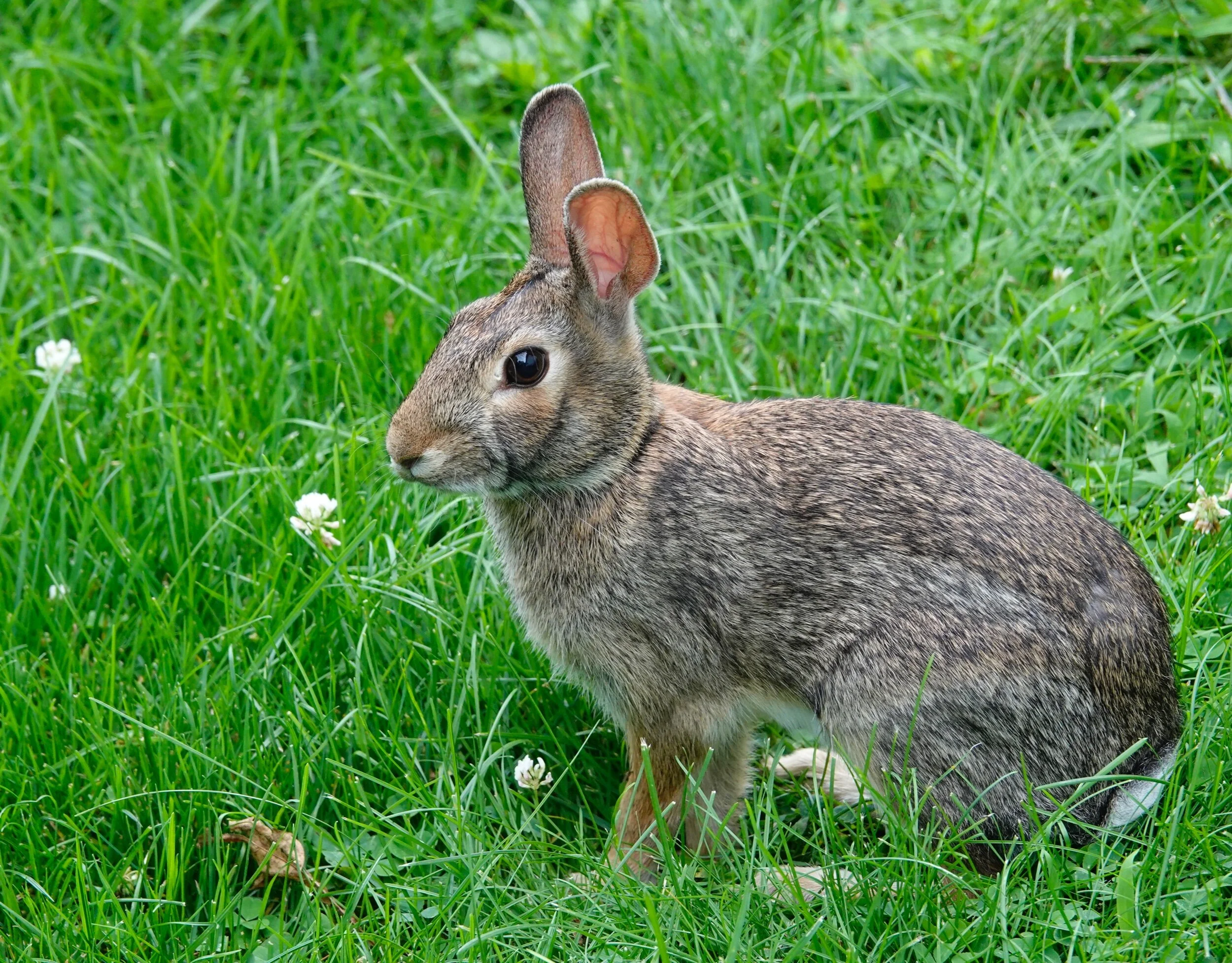
An Eastern Cottontail named David Hopperfield.
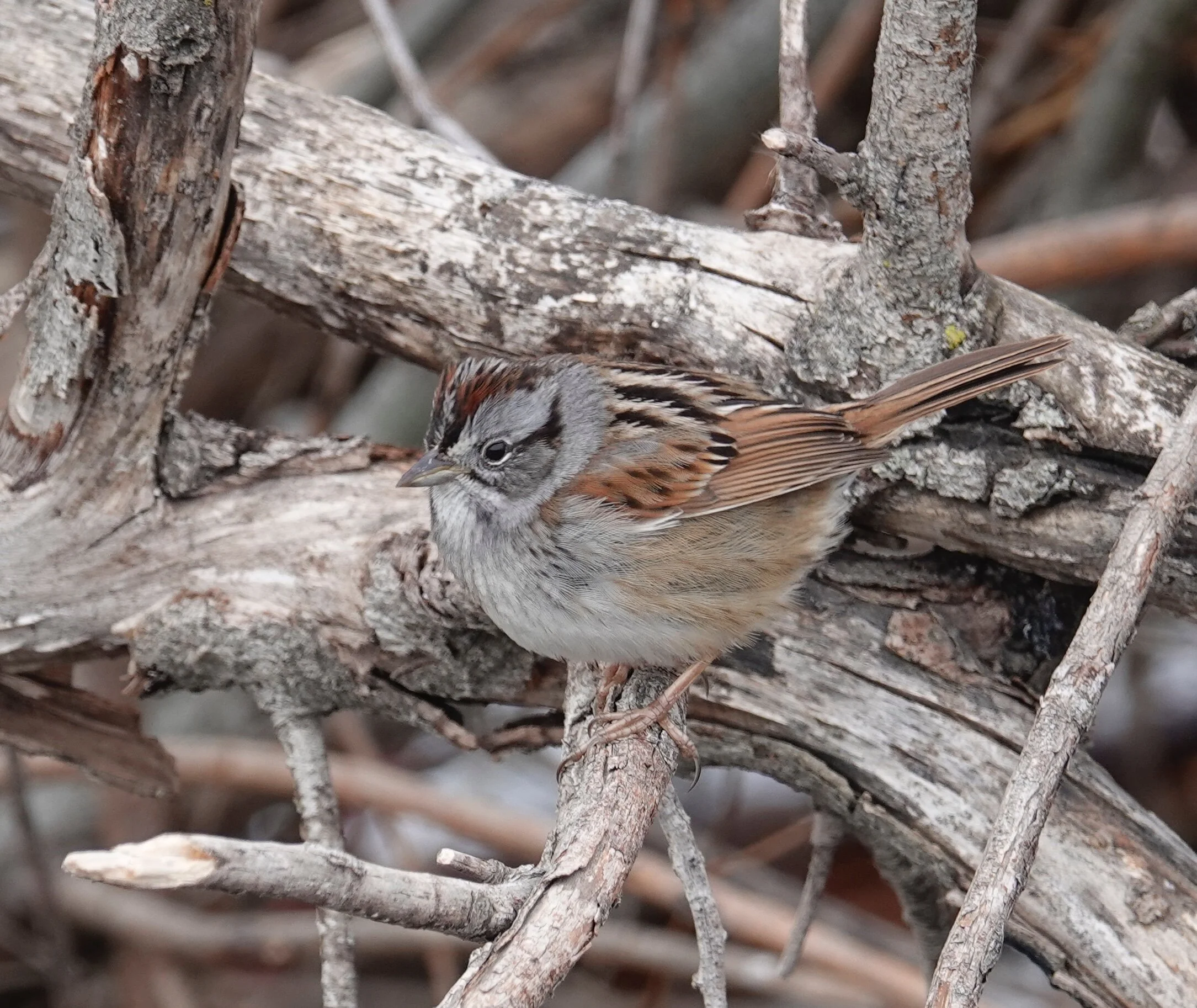
It looks as if this Swamp Sparrow misplaced the swamp.
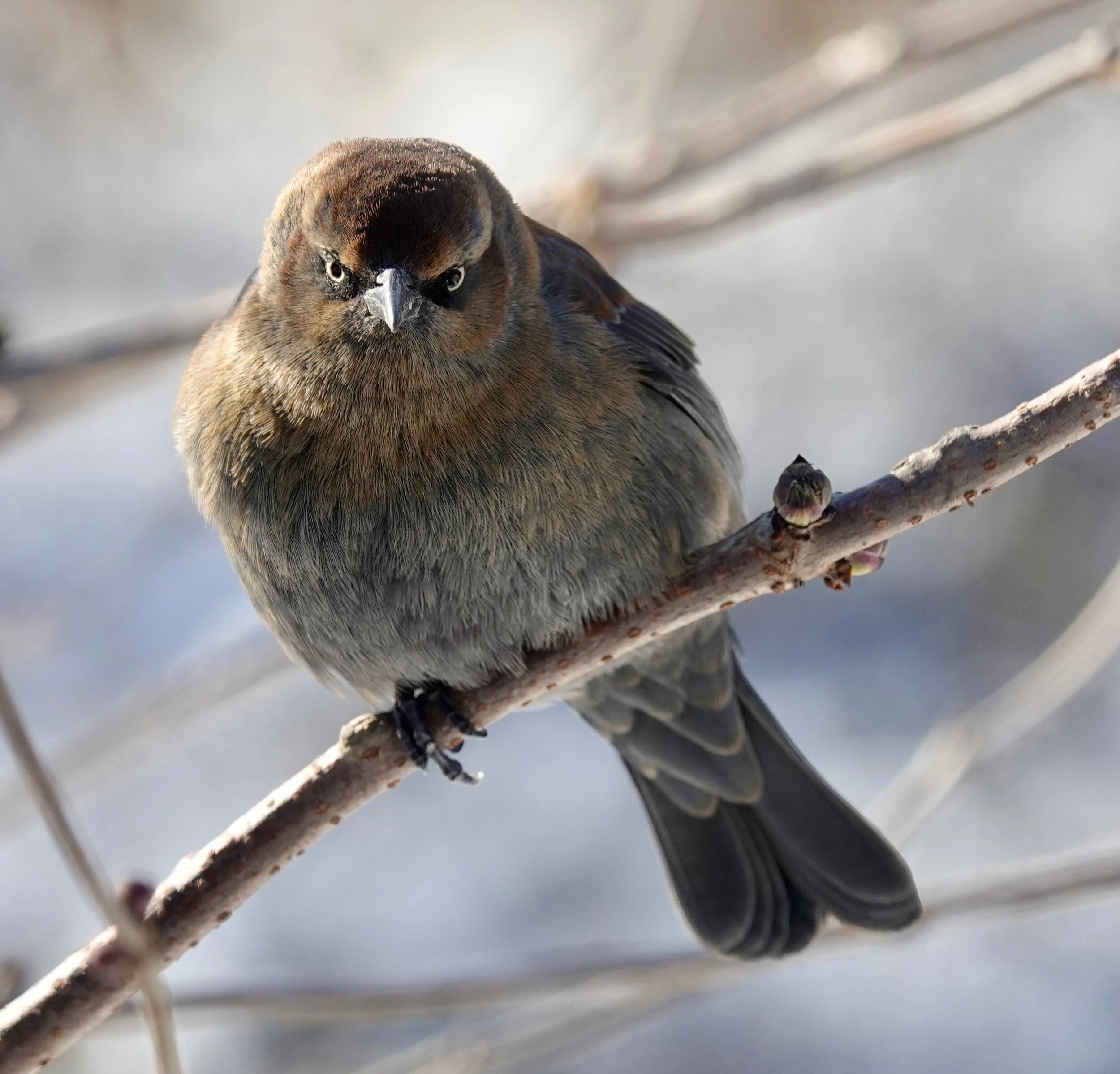
This Rusty Blackbird isn’t that excited about the weather forecast.

The Association for the Preservation & Appreciation of All Chickadees has bribed me with endless cuteness. There are seven species of chickadees in North America. Each one is my favorite bird.

The Association for the Preservation & Appreciation of All Chickadees has bribed me with endless cuteness. There are seven species of chickadees in North America. Each one is my favorite bird.

Minnesota has some Black-billed Magpies, but no Yellow-billed Magpies. There was an old TV cartoon called “Heckle and Jeckle” featuring two tricksters who were magpies. Those two had yellow bills.

It wasn’t the smoothest landing ever made by a Bald Eagle, especially one who had logged so many flight hours.

If a cardinal poops on you, it’s supposed to bring good luck. I took a hit for humanity. It worked. 2020 ended.

A Red-bellied Woodpecker flashes the red belly that has made it the envy of all other woodpeckers.

I am as happy as a lark to see a sparrow. I love the song of the Song Sparrow.
Naturally
My first bird of the year was a cardinal. A white-throated sparrow found food on the ground on New Year's Day. The Christmas chipmunk joined it. The night before, I'd wondered how many stars there were in the sky.
A drive to drop off of Christmas things directed my eyes to house sparrows. They were abundant around livestock. Their numbers were greater when considerable food was available in cities because of horses. House sparrows feed on spilled grain and undigested seeds in manure.
I spotted a Baltimore oriole nest still hanging on. The female chooses the site. She generally builds the nest, a hanging pouch firmly attached to a fork of a slender branch in the upper branches of a deciduous tree (especially cottonwoods, maples and elms). It's tightly woven of plant fibers, strips of bark, grapevines, grass, yarn, string, plant down and hair.
I drove by muskrat mounds (lodges and push-ups). An old trapper told me to count lodges and multiply by five to get the muskrat population of a wetland.
While walking on a Christmas Bird Count, I saw some black knot, a widespread fungal disease that attacks trees of the genus prunus, like plum and cherry trees. The hard, uneven, black galls appear to enwrap twigs and branches. Some trees tolerate black knot while others are stunted or killed.
Voles prefer a white Christmas. They love to be under the snow for Christmas. They prosper in the subnivean zone, the area between the surface of the ground and the bottom of the snowpack. Mice and shrews also retreat there for protection from cold temperatures, bitter winds and hungry predators. Food is available there. It takes about 6 inches of snow to provide the critters with a sturdy roof and roomy living quarters. A bit more snow and the subnivean zone remains near 32° regardless of the temperature above the snow.
Q&A
A St. Peter reader asked what he should do with his bird feeders when he heads south for the winter. The best option would be to ask a kind friend, someone you can blackmail, a family member, a friendly neighbor or someone you could pay a princely sum to fill your feeders while you’re away. The good news is that your birds will do fine while you're gone. Birds adjust and they don't become dependent on a single food source. They will continue to patronize other food sources and find new ones. To prepare for your departure, slowly lessen the amount of food offered in your feeders so your avian amigos won't be shocked when they find the feeders are empty or removed. Even if you remove your feeders, the birds will come back. When you return home and have restored and filled the feeders, it might take a few days for the birds to find the food. When that happens, there is a chance of a tearful reunion. And don't worry, we, the stubborn or stupid who remain in Minnesota all winter, will continue to have nothing but good things to say about you.
"What do beavers eat?" The beaver is the largest rodent in North America weighing 40 to 70 pounds and eats bark, buds, stems, twigs, grasses, mushrooms, leaves, ferns and the roots of aquatic plants.
“How do I know what winter finches from the north might visit my yard?” The movement of some finches and other birds into Minnesota is based on the abundance of food in Canada. Pine grosbeaks might not be traveling much as the mountain ash fruit crop was good in the northern coniferous forests this winter. Pine siskins were reported at many feeding stations in 2020. They feed on spruce seeds in Canada and finch seed at our feeders. Red and white-wing crossbills feed primarily on conifer seeds. Purple finches show up most years and feed on the sunflower seeds we offer. Common redpolls (a redpoll weighs slightly more than four pennies) feed on birch and alder seeds. They eat nyjer seed at feeders. A caller said she'd spotted the largest goldfinch she'd ever seen. I want to see one of those evening grosbeaks in my yard, too. They feed on box elder, maple, ash and locust seeds. They're prodigious eaters of sunflower seeds. Red-breasted nuthatches aren’t finches but depend on conifer seeds when wintering in the north.
“Where does the name sandpiper come from?” I suspect the derivation is due to a combination of a piping cry coming from a bird on the sand.
Thanks for stopping by
"Ring out false pride in place and blood, the civic slander and the spite; ring in the love of truth and right, ring in the common love of good." — Alfred, Lord Tennyson
"There are two seasonal diversions that can ease the bite of any winter. One is the January thaw. The other is the seed catalogs." — Hal Borland
Do good.
©Al Batt 2021
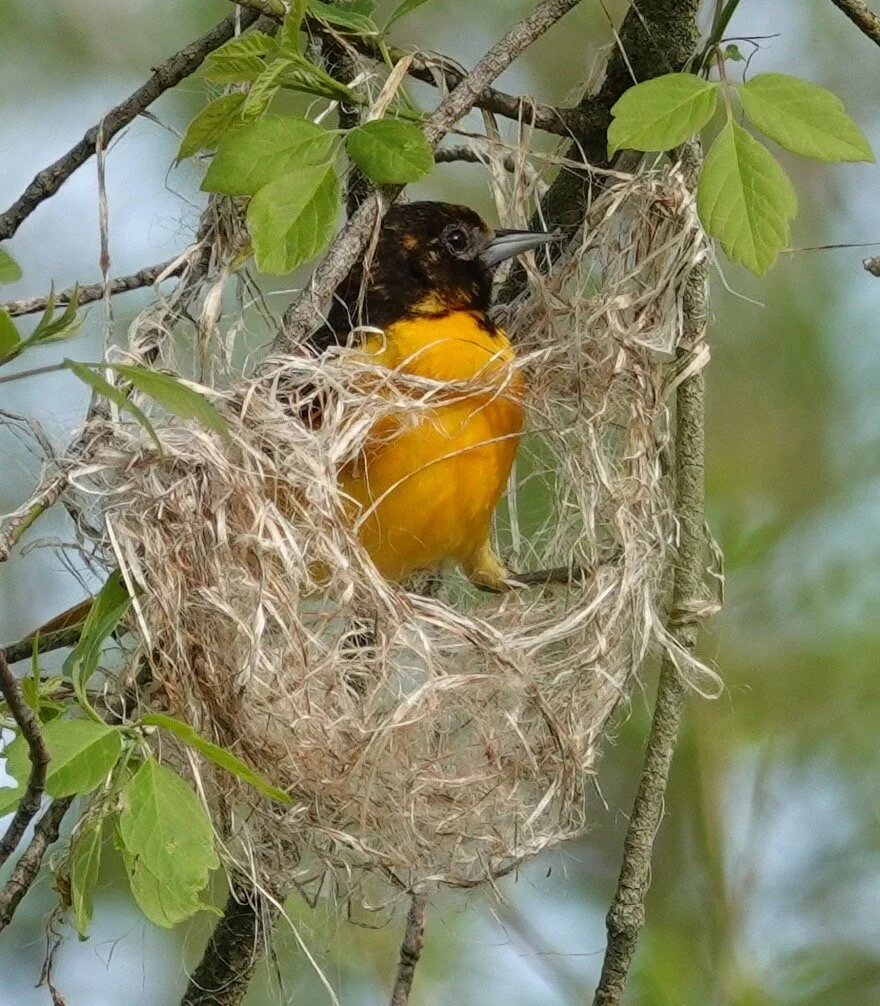
A Baltimore Oriole constructing a nest. Photo by Al Batt

The looming House Sparrow is considerably larger than the Eurasian Tree Sparrow.

This Blue Jay just saw the price of peanuts.

A House Finch in front of a Purple Finch fading into the bokeh.

A little snow goes a long way on a chickadee.
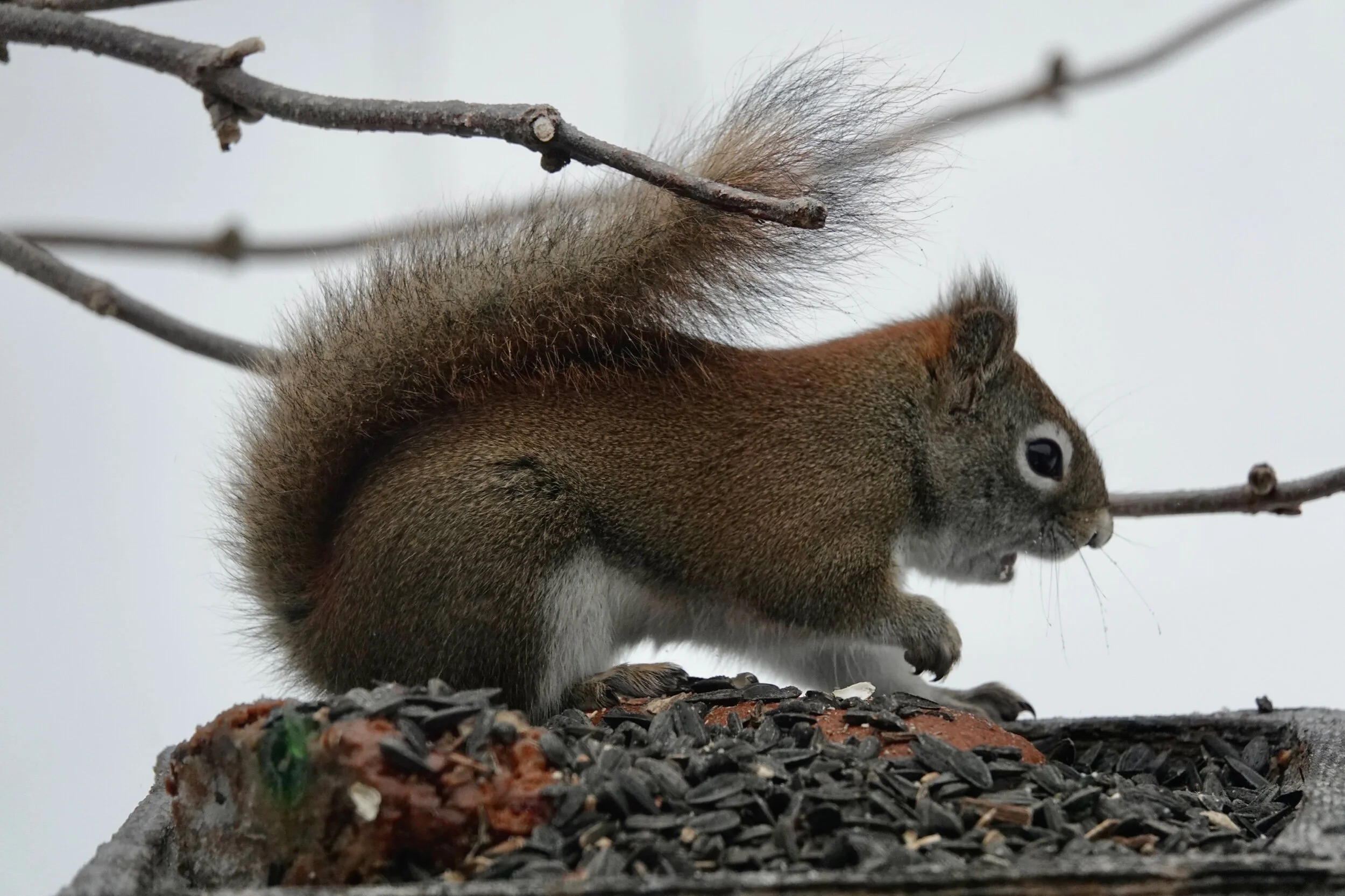
A Red Squirrel is upset more often than I am in a canoe, but not by much.

In a flashback to warmer times, I see an American Avocet.
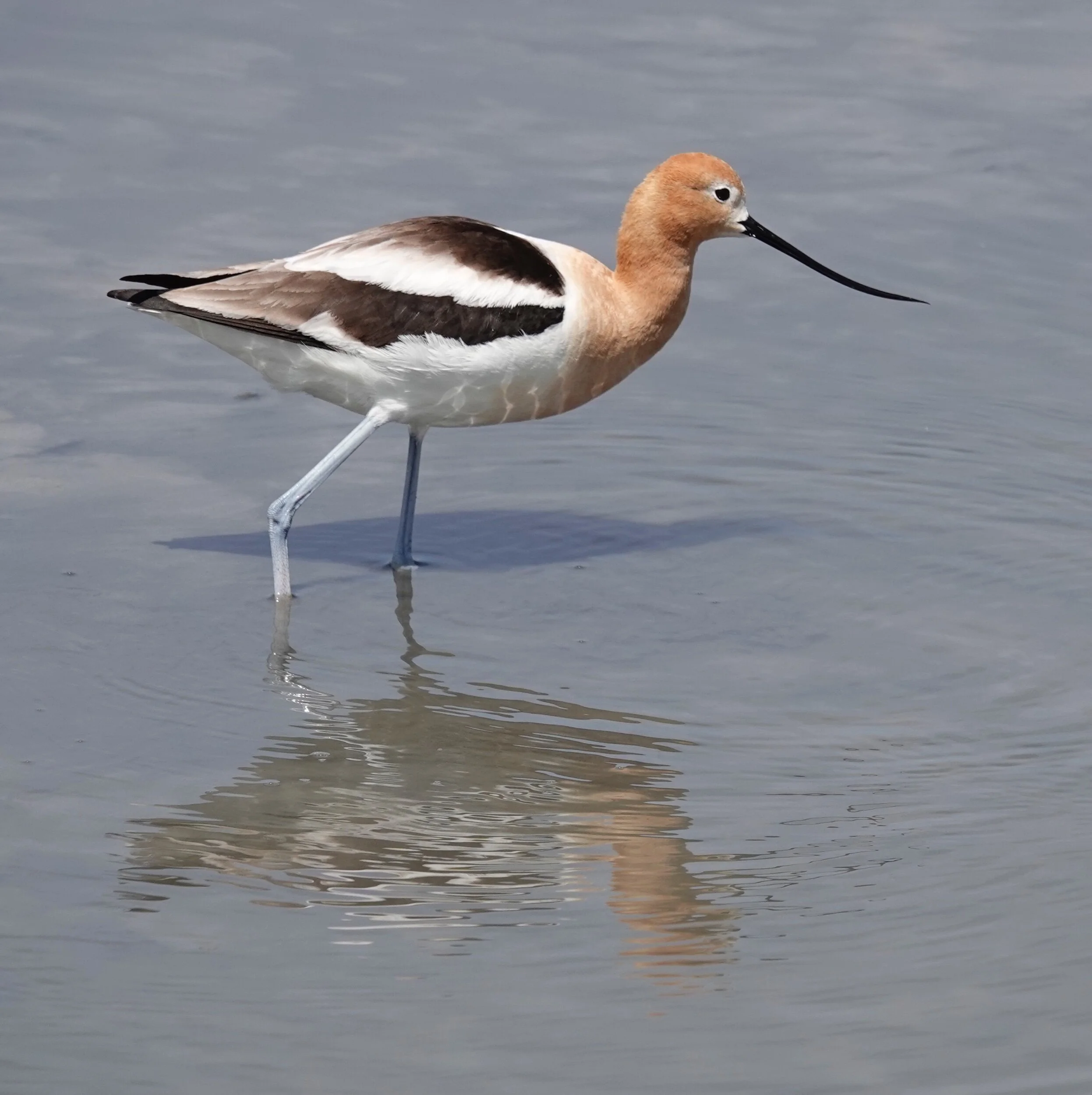
It’s a lengthy flashback.

I couldn’t find a pumpkin to see if it had frost on it or not.

I couldn’t find a pumpkin to see if it had frost on it or not.

I couldn’t find a pumpkin to see if it had frost on it or not.

I couldn’t find a pumpkin to see if it had frost on it or not.
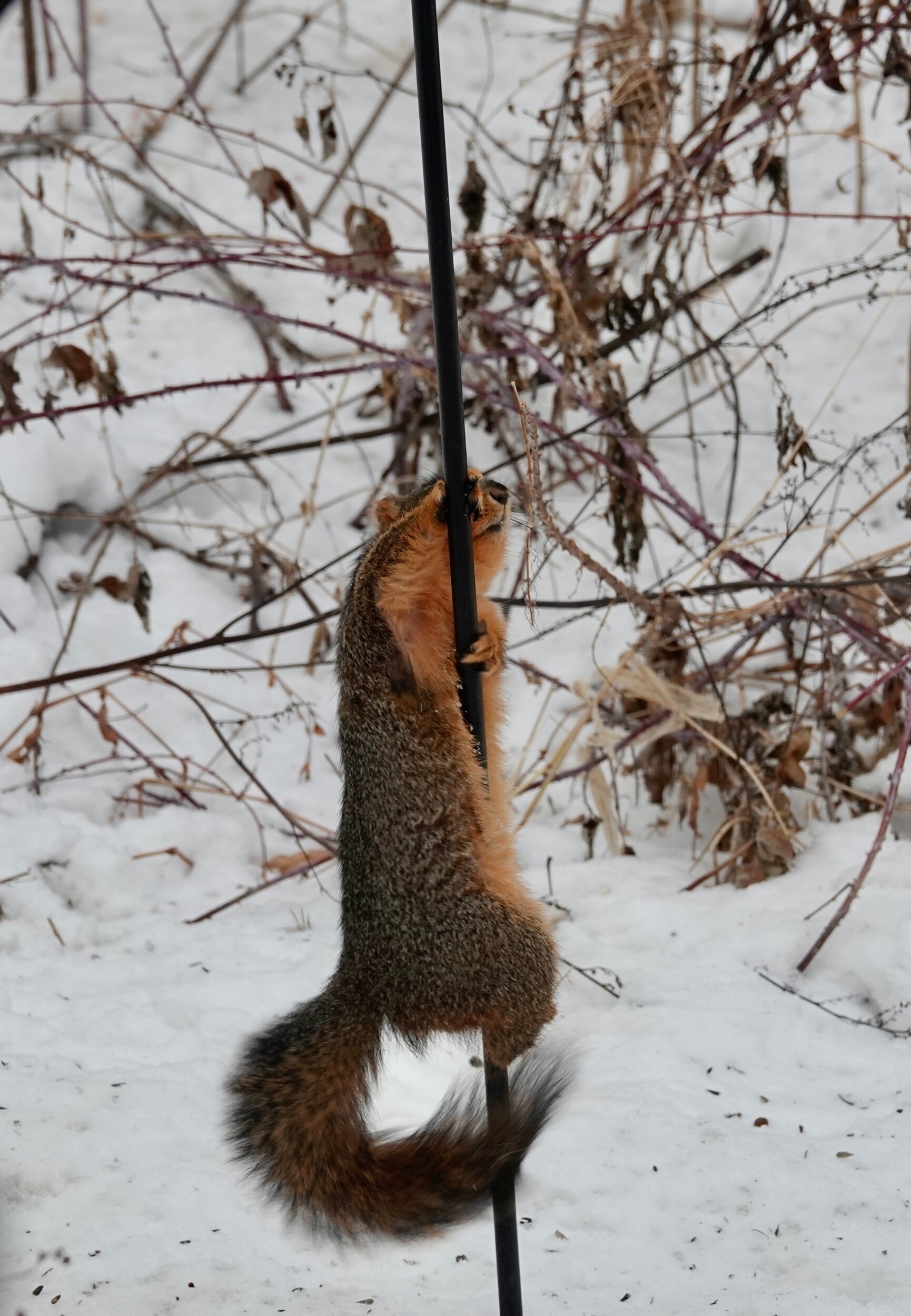
Firefighter training for squirrels.

A Eurasian Tree Sparrow is hanging around with a gang of House Sparrows in my yard. The bird is a lovely surprise. I’d not seen one in my county before.

A Eurasian Tree Sparrow is hanging around with a gang of House Sparrows in my yard. The bird is a lovely surprise. I’d not seen one in my county before.

What’s that in the feathers of a Ring-necked Pheasant rooster? It’s sheer loveliness.

The stunning gorgeousness of a goldfinch.
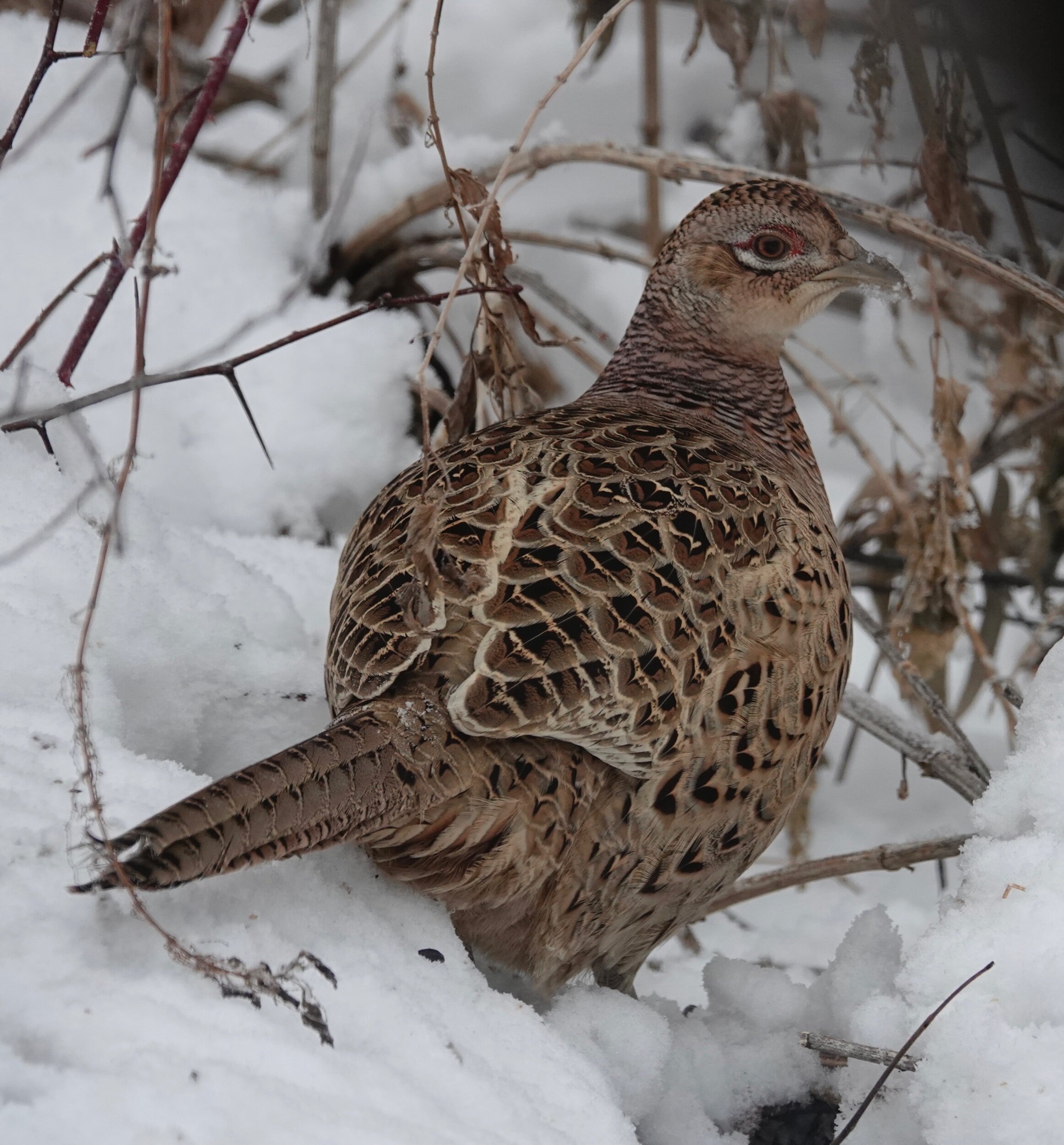
Ring-necked Pheasant hens striving to blend in with an environment that doesn’t always look like a pheasant.

Ring-necked Pheasant hens striving to blend in with an environment that doesn’t always look like a pheasant.

Ring-necked Pheasant hens striving to blend in with an environment that doesn’t always look like a pheasant.

That which doesn’t freeze us solid makes us warmer.

What does a spider think when it finds a man in its shower?

Our local Audubon group has a preserve, bees and Wendy’s plants.

Our local Audubon group has a preserve, bees and Wendy’s plants.

Our local Audubon group has a preserve, bees and Wendy’s plants.


And now for something completely familiar — a snowbird (Dark-eyed Junco) and snow.

Notice the tubercle on the pelican’s bill on this sign in Albert Lea, Minnesota. I have been pleased to narrate natural history tours on a boat floating on Albert Lea Lake (glimpsed behind this sign) for many years until the virus shut that wonderful enterprise down.

I’ve been honored by being able to lead nature walks here in Albert Lea, Minnesota. It’s a place where a bird bum like me could walk forever.

A House Finch makes a wonderful neighbor. It beautifies the neighborhood, sings songs I enjoy hearing and never borrows any tools.

It was a good day, but not perfect. I had some egrets.
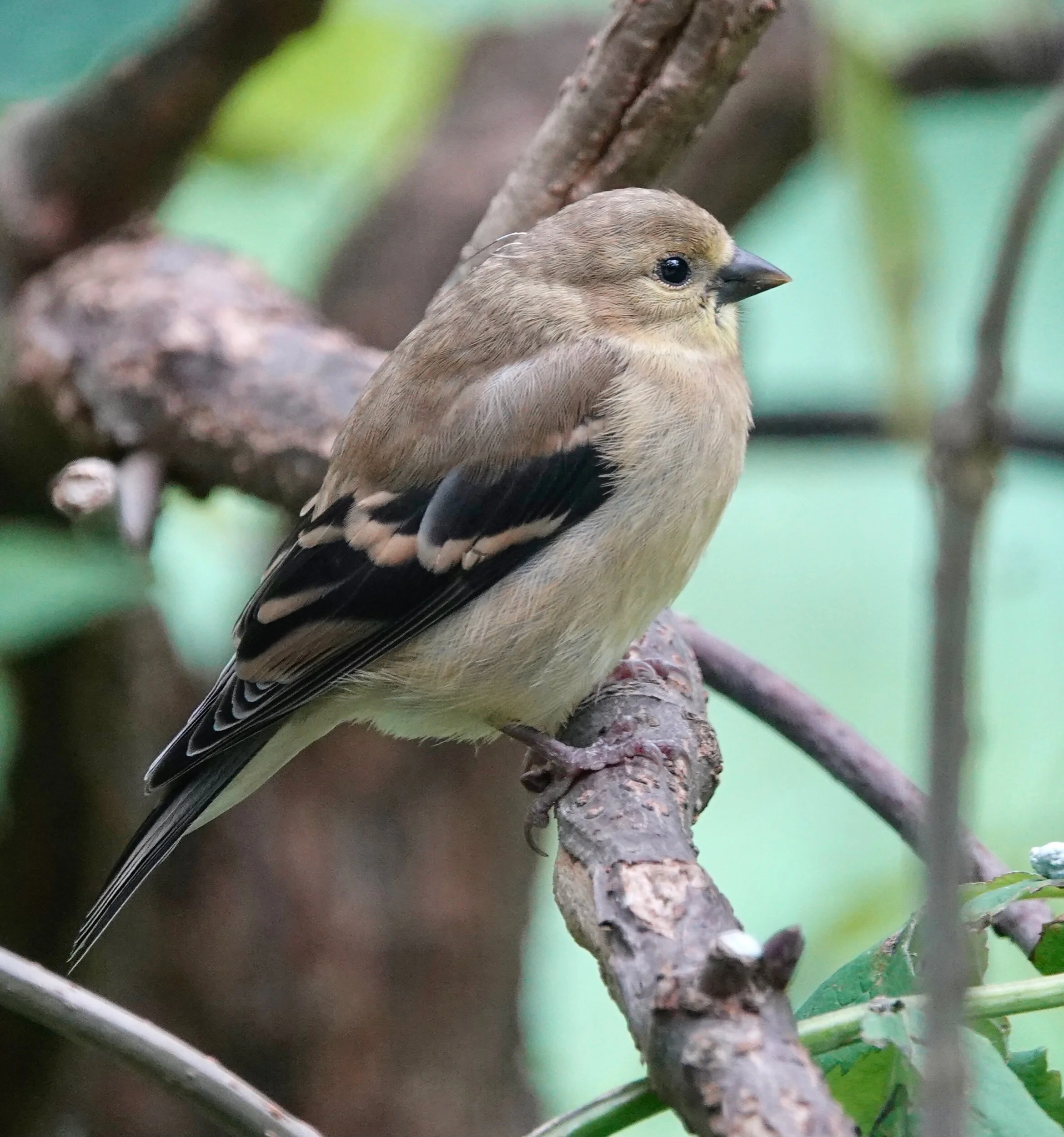
One goldfinch is worth every penny I pay for finch seed.
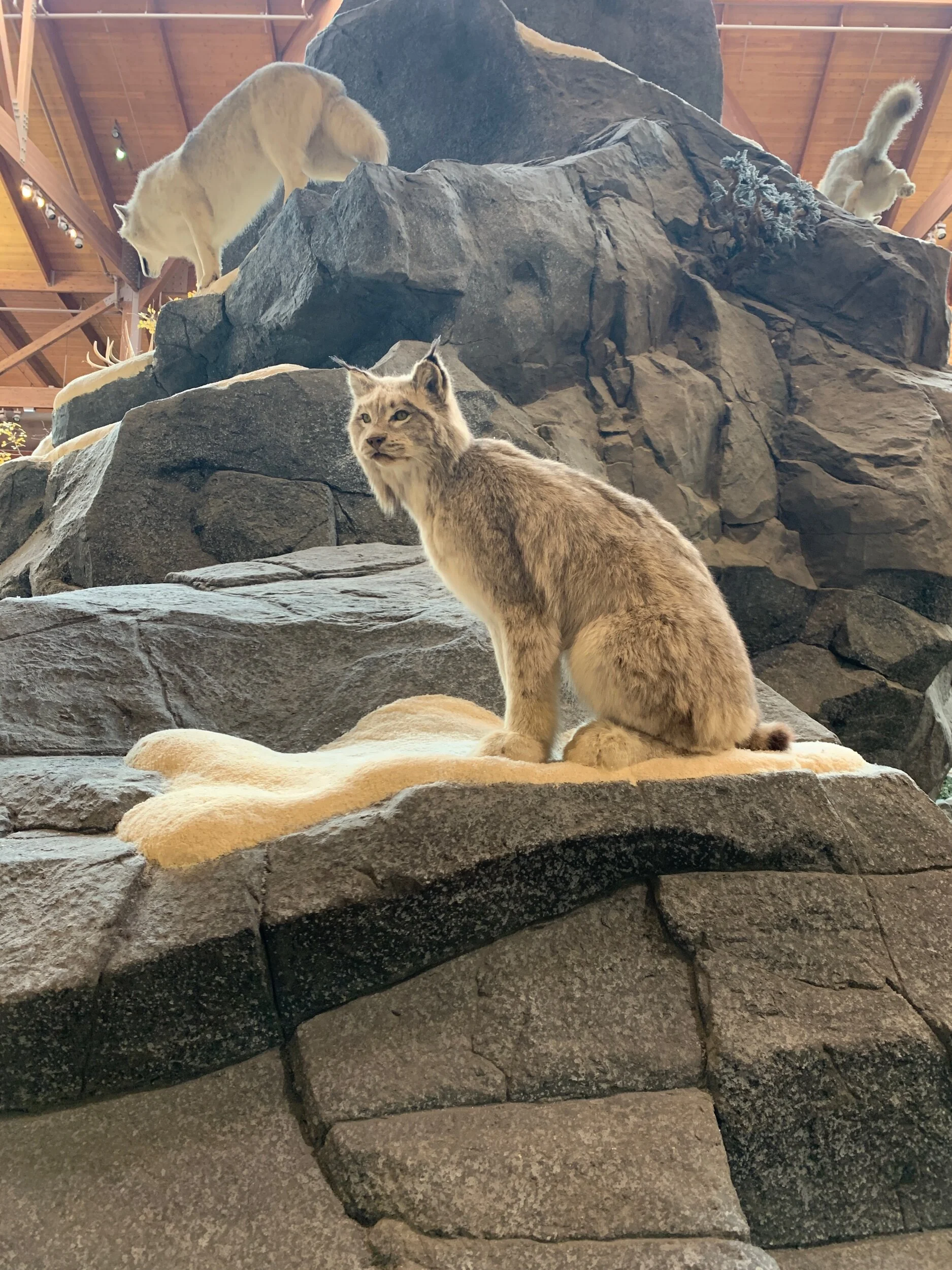
A lynx in a Cabela’s store. Not many of them shop there.
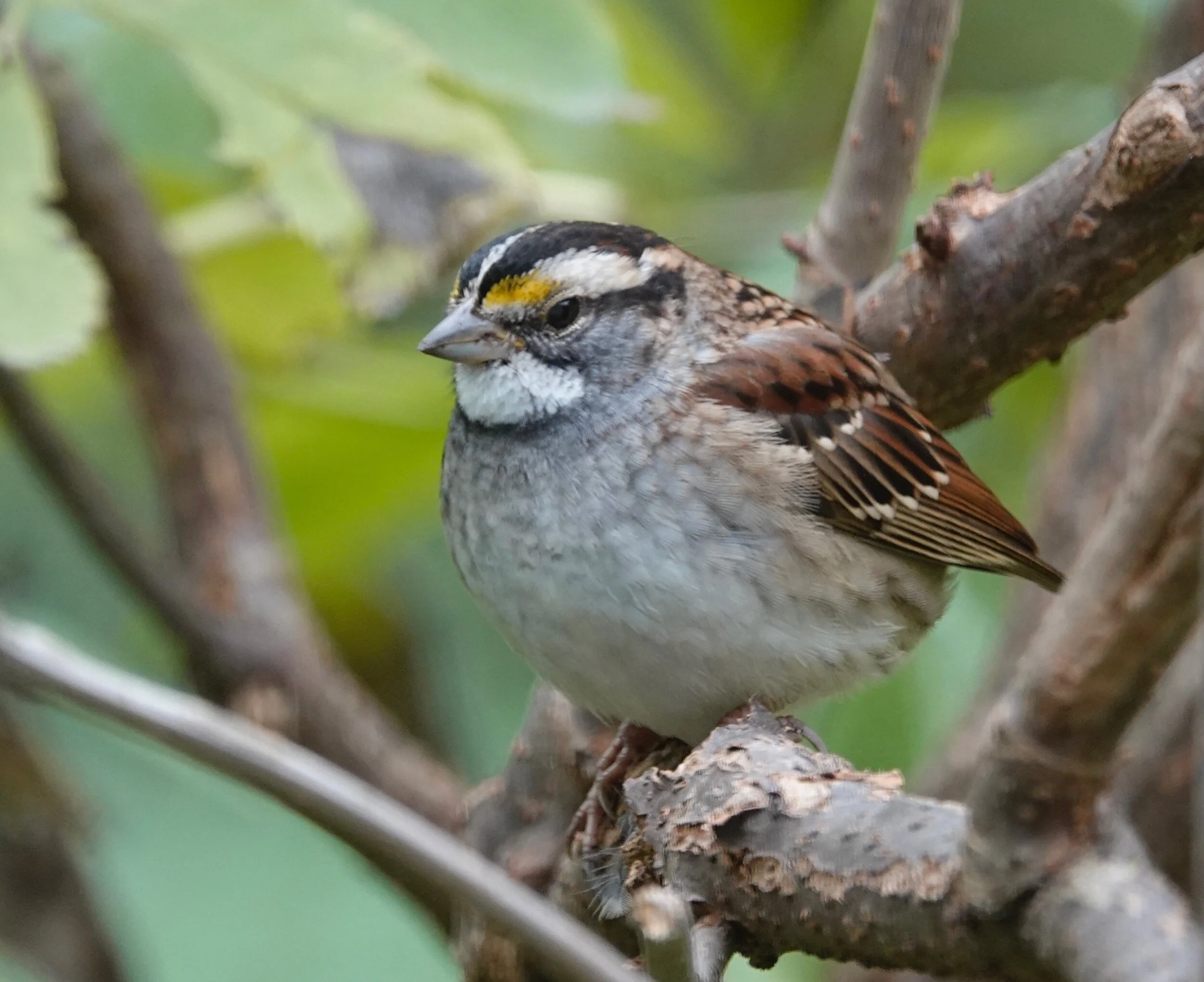
A White-throated Sparrow — probably not this one — is still spending time under my January feeders.